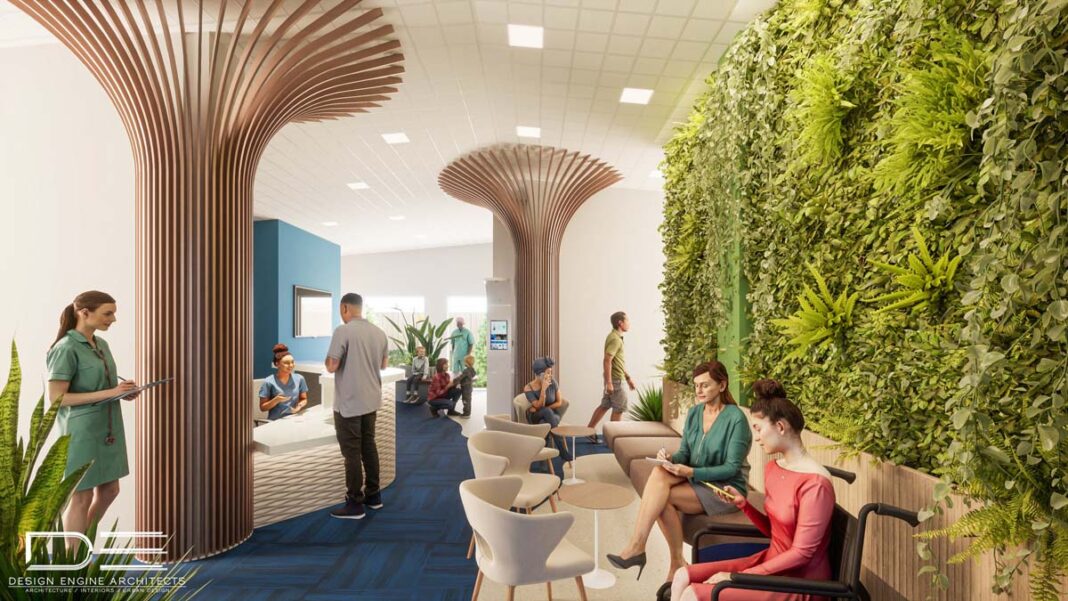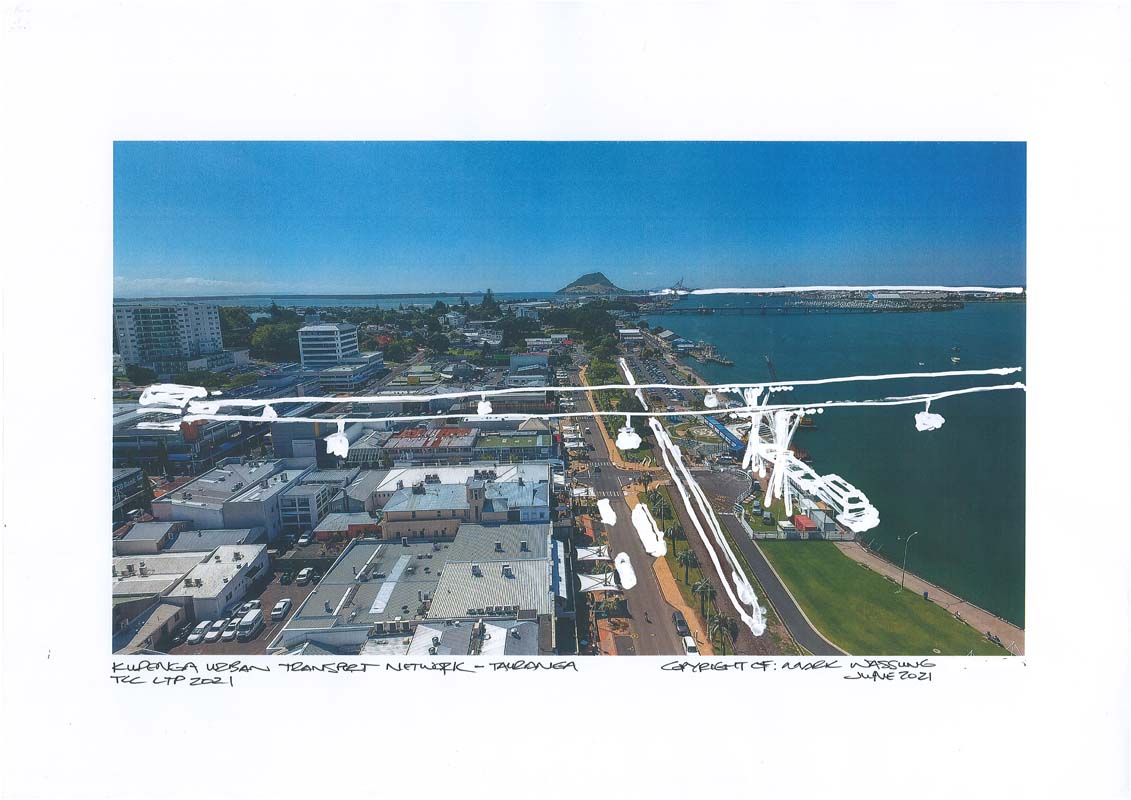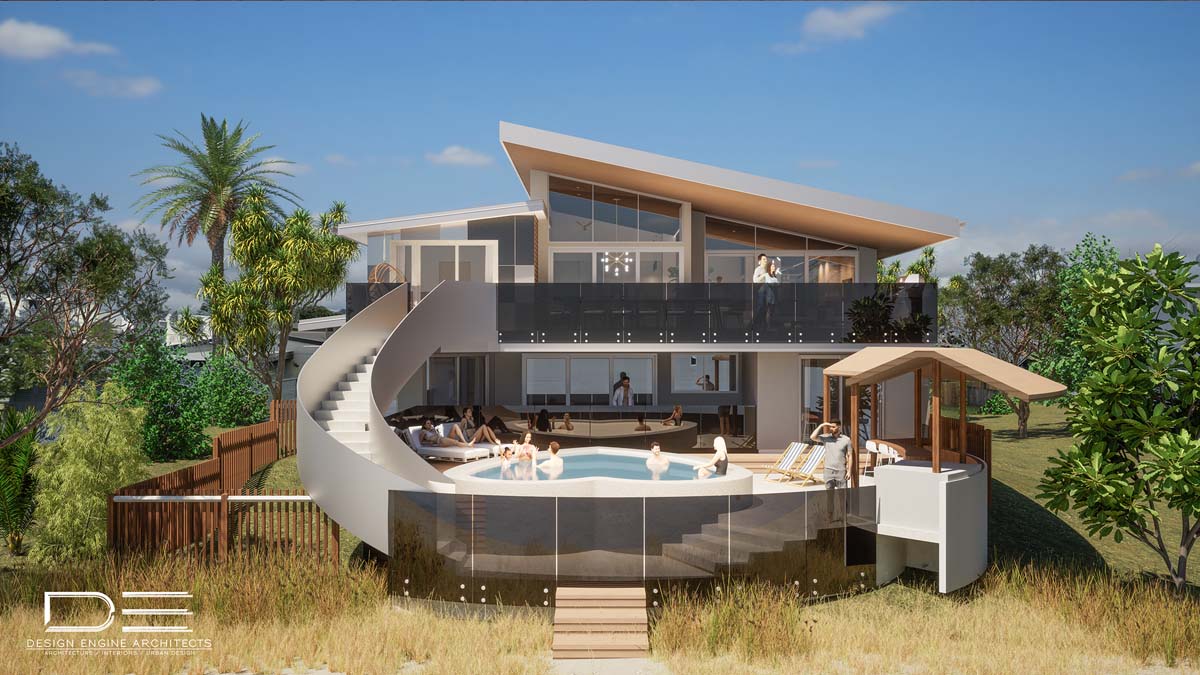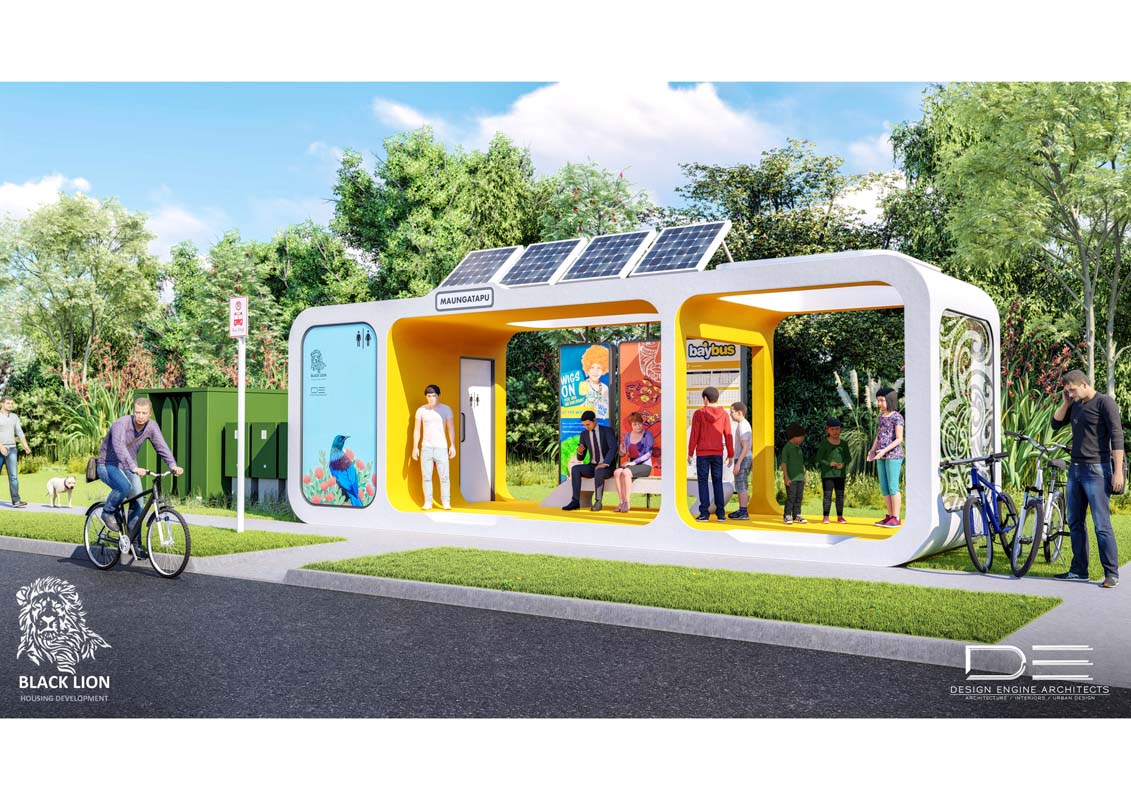Accepting “more of the same” in Tauranga’s urban design spaces at such a crucial time in the city’s development history is furthest from the mind of Design Engine Architects directors Mark and Abigail Wassung.
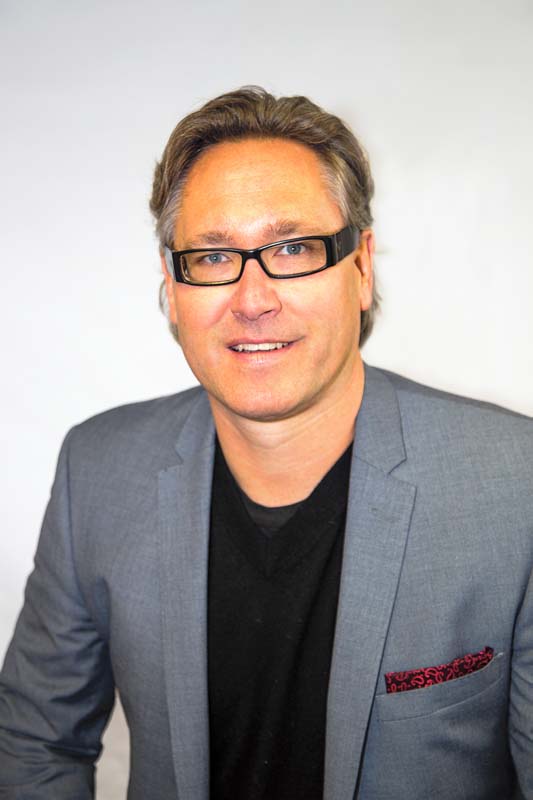
After seven years based in Tauranga having moved over the hill from Hamilton, they are excited about what Tauranga city could become in the coming decade, and the role Design Engine can play in shaping that future.
Mark envisions Tauranga and Hamilton as one city in the next 10 years, connected by high-speed rail with passenger train stations through a new Kaimai Tunnel that is multimodal ie. for trains, trucks, cars and cyclists/pedestrians, connected to Tauranga Connect multimodal transport network with buses, trains, ferries and cycle routes, plus two new four lane bridges high enough to allow ferries under, to replace the existing Turret Road bridge and Maungatapu bridge to enable better flow across the roading network.
“As a company we have always looked outside the usual boundaries of conventional design, we are more about the ‘what if’ rather than the ‘what is’, and never has the city been better poised to benefit from this sort of thinking,” says Mark.
Design Engine’s portfolio of work spans the Bay of Plenty and Waikato, comfortably encompassing a range of projects as varied as a thermal and mineral water resort, transport hub, ocean terminal, train station, a medical centre, eco housing subdivision, 10,000 m2 super workshop/solar farm and a multi-generation family beach home.
The ease of working between different design functions and regions is matched to Design Engine incorporating many of the leading-edge concepts and technology into their building designs.
The new Papamoa Consult 365 Clinic medical centre open 24/7 with 8-minute wait times, highlights Design Engine’s emphasis upon place and people in its design.
Drawing strongly off its seaside locale, the centre’s design touchpoints have captured the beach that plays such a big part in the lives of so many of its patients.
Flowing wave forms, islands, trees, and green walls are visual cues for patients and visitors to enhance movement through the clinic, while a shell shaped area defines the reception area and waiting zones are defined by beach shaped flowing form areas.
“This is a prototype design that we can see being applied elsewhere in the Bay of Plenty, it is a visually appealing, bold, colourful design that provides a calming, comfortable and safe sanctuary.”
In the nuts-and-bolts reality of building construction, Design Engine is increasingly incorporating cutting-edge materials that turn buildings into smart, eco-friendly, energy efficient structures.
Materials like paper thin solar cells, hydro ceramics and bio-based building products are enabling clients to sensitively integrate their buildings with their environment, minimising carbon footprints, and optimising energy efficiency.
Design Engine took many of these modern materials and incorporated them into their bright solution for new city bus shelters in Tauranga.
The prefabricated smart solar bus shelters design takes a modular, relocatable approach to the structure, with a solar powered unit to light up signs, timetables, and security cameras.
Design Engine has also designed a small 20-seat electric bus that provides fast, frequent, reliable, and affordable transport.
Often the smartest and most commercially sensible move when seeking a more modern facility is to adapt an existing building, upgrading it to meet the environmental, economic and community expectations that go with modern design.
Design Engine has the skills to capture an old building’s strengths to leverage it into a new lease on life.
“Adaptive reuse” can help reduce the waste generated through demolition and see an old building re-purposed and back into a new life cycle far quicker than opting for the expense and time taken in building a new one.
Design Engine’s DNA has blue sky thinking unapologetically embedded within it. This goes beyond just the buildings they have worked with clients on, to include a number of proposals promoting alternative means of travel reducing reliance upon private cars, options that stretch beyond the usual definitions of “public transport.” This has included the Tauranga “Kupenga,” a cable car transport network running across the harbour to Bayfair, and up to downtown Mount Maunganui.
Kupenga would remove dozens of vehicles off the road and provide a unique public transport solution for the city.
“We see huge opportunities for intensification of living in the Tauranga city area in coming years. This obviously includes the Cameron Road area, but could also include the Maungatapu Peninsula, with its unparalleled views and proximity to the city, it just all has to be linked up better.”
Taking the latest in design technology and materials, creating buildings that respect the people and the environment they exist for and within, means Design Engine is poised to play a crucial part in shaping the Tauranga of tomorrow, creating a liveable city for all the generations choosing it as their home.
Related: Architect – Urban Design: Design Engine Architects leading the way DE-sign, DE-light, DE-termination


